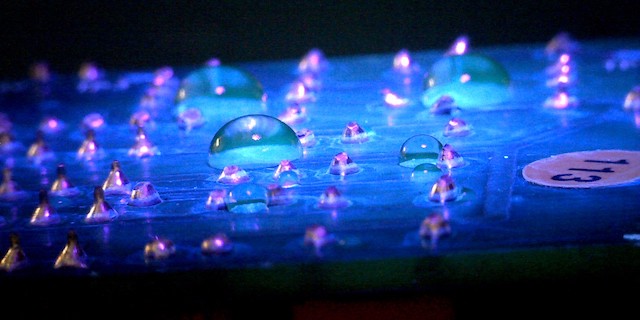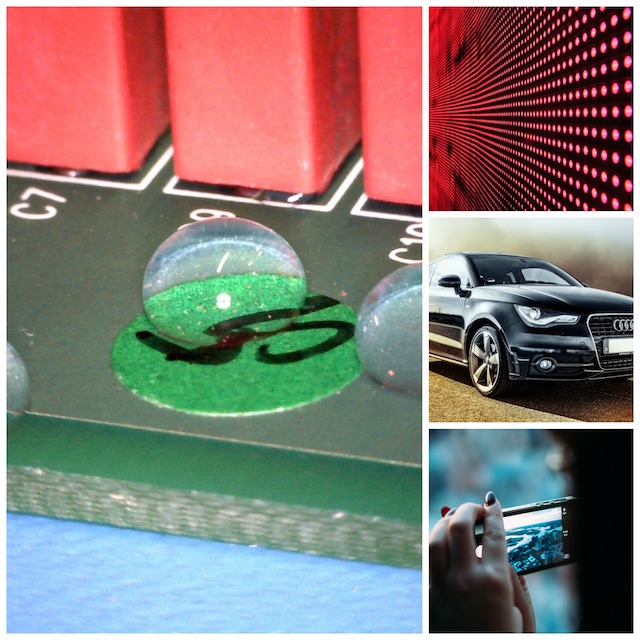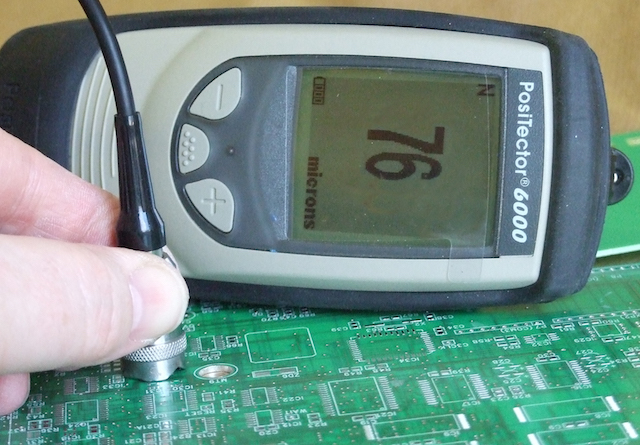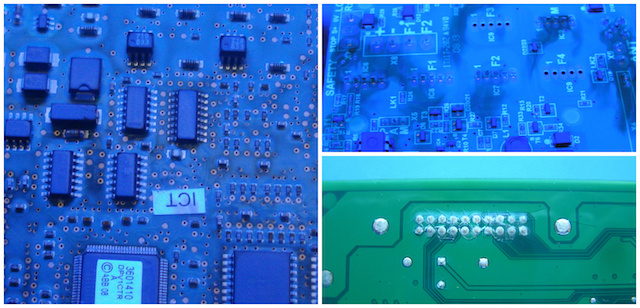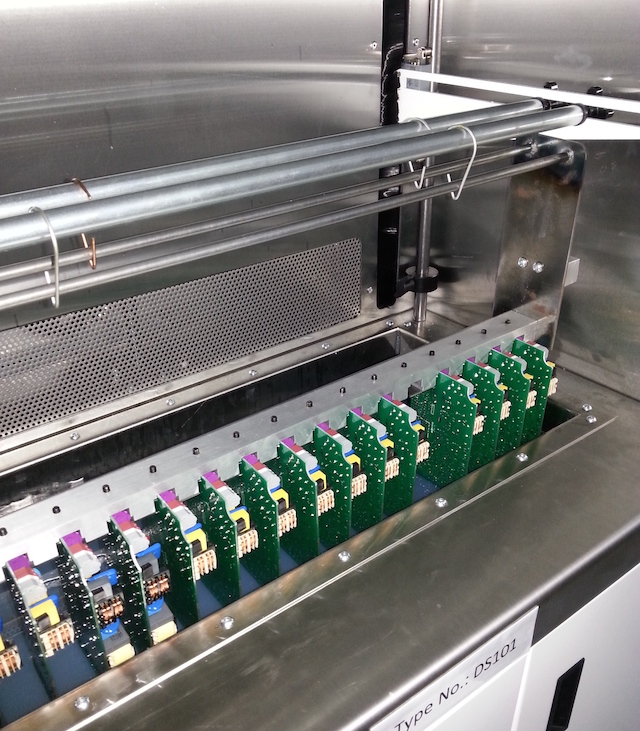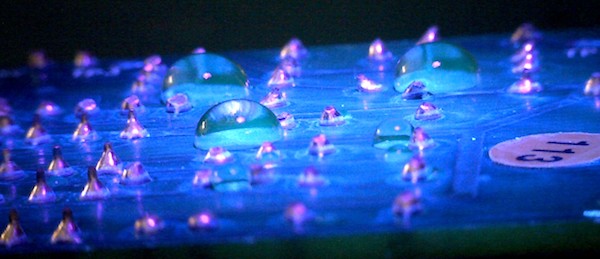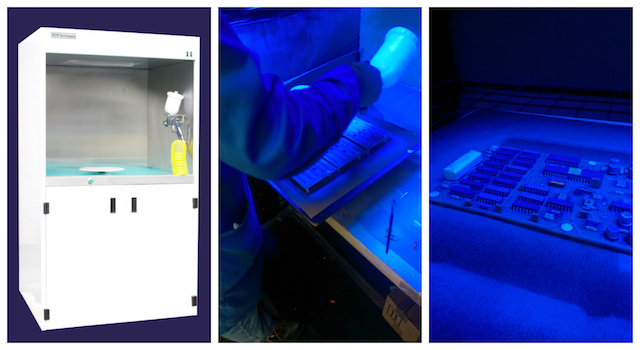
Batch spraying is one of the widest used techniques used in low and medium volume conformal coating processing.
Whether you are using a compressed air spray gun or an aerosol can, the conformal coating is sprayed across the whole of the circuit board.
It can produce a high quality coating finish that gives the best protection due to good edge coverage.
However, it is not a selective process. All parts are coated on the circuit board.
Therefore, masking may be required to protect components that must not be coated.
What equipment do you need for batch conformal coating spraying?
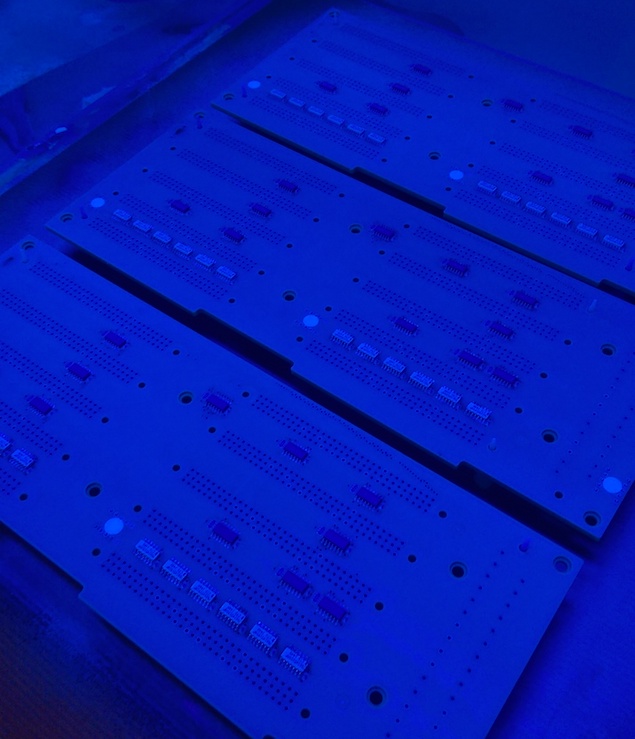
If you are not using aerosols then for conformal coating spraying a typical set up is:
- Spray gun
- Air Compressor for the Air Supply
- Spray booth
This is a low cost set up that can handle a fairly high volume of product.
However, the quality of the finish is dependent on the quality of the spray equipment itself and the operator.
How do you apply the conformal coating by spraying?
Although the process can be material specific there are a few general guidelines for applying conformal coating by spraying.
These include:
- Only apply thin, consistent coats. It may be necessary to apply more than one coat.
- Apply the coating in a narrow raster pattern across the circuit.
- Rotate the board 90 degrees and repeat. Continue until the whole board is coated to avoid 3D effects.
- Allow the coating to dry enough to avoid problems like bubbles before applying a second coat.
Following a few simple guidelines can save a lot of problems.
What variables control the quality of the conformal coating in batch spraying?
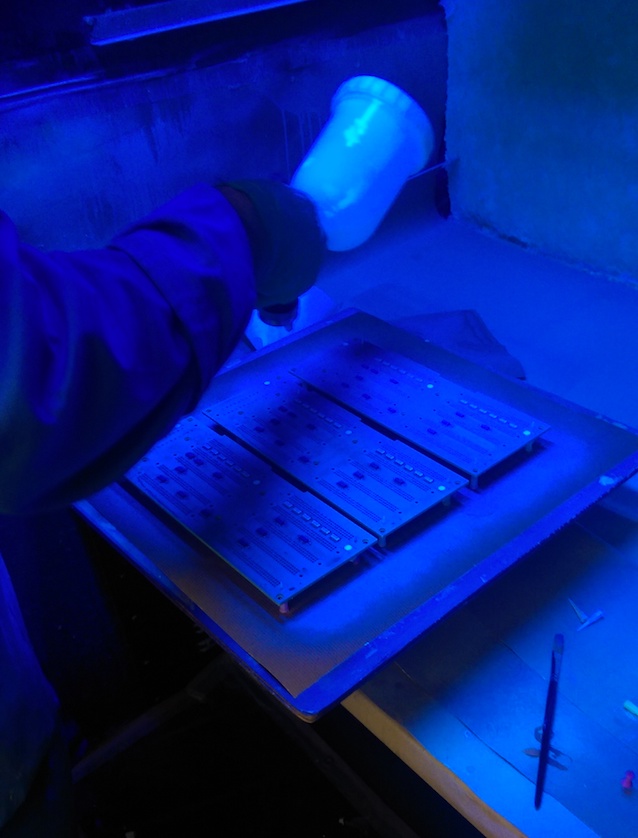
Variables that influence the quality of the coating process in spraying are:
- The operator skill
- Quality of the spray equipment
- Viscosity of the conformal coating
- Blending the conformal coating to the right viscosity is critical.
- The level of masking required
Find out how we can help you with your conformal coatings now.
Contact us to discuss your needs and let us explain how hydrophobic coatings could work for you.
